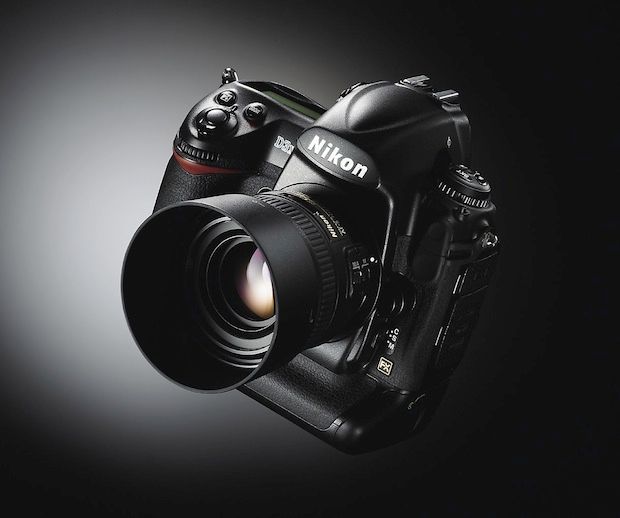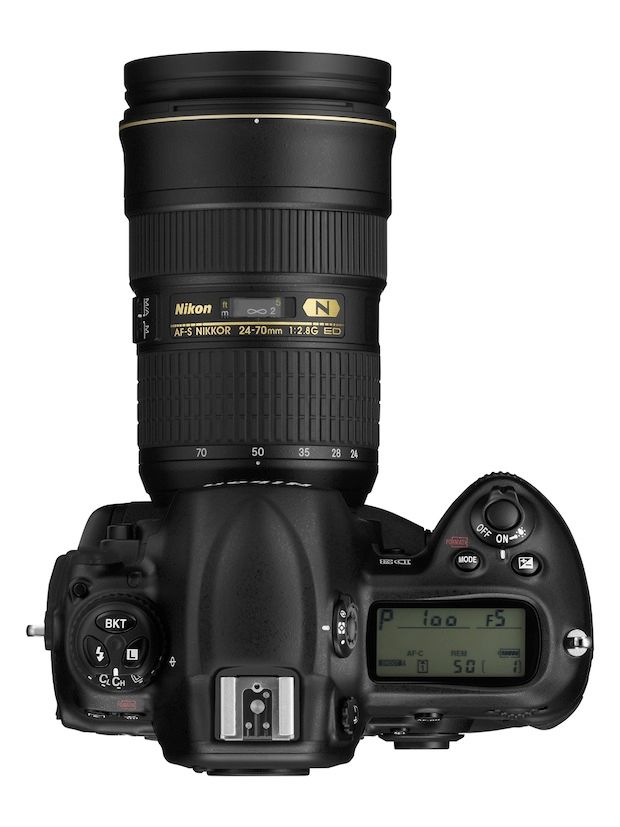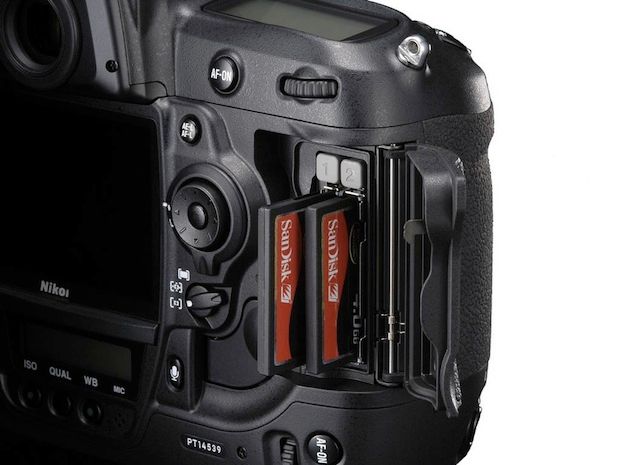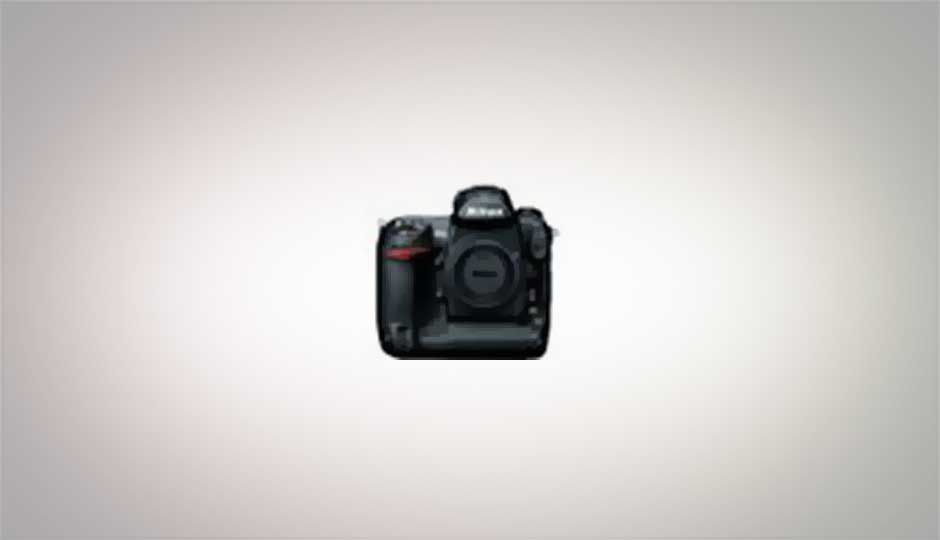Nikon D3s – A killer professional body and the low-light champ detailed review
Any photographer worth his prime lens would have heard of the Nikon D3s. A full size, full frame, professional-grade body, the D3s is Nikons offering to professionals who don’t quite need a very high megapixel output, but demand speed and do a lot of shooting in low, or less-than-ideal light. Pro bodies such as this one are definitely not for the tentative enthusiast. They weigh well over a kilogram, the D3s tips the scales at 1240 grams. Add one of the better Nikkor lens, and the weight of the package will exceed two kilograms. That’s a lot of camera to lug around, although photographers would hope the inconvenience is offset by the image quality, functions and usability.

Look and Feel: A seriously professional body
Looking at the D3s face on, one cannot help be impressed at the sheer size of the camera. Those wanting sleek cameras will find the Nikon D3s to be a sumo-grade heavyweight, while pros will appreciate the heavy, solid lines and reassuring heft, and the substantial grip that makes even the D300s seem like a cheap toy. In fact, the sturdy magnesium-alloy frame has been given one of the chunkiest rubber grips your money can buy. As a result, the Nikon D3s is very comfortable to hold. Ones fingers do not have to bend, and at no point does hand-space feel insufficient. As one would expect with such a large grip, all the buttons are well spaced out, sufficiently to render them usable even if you are wearing gloves. Quite a bit of the surface is metal as well, and on the whole, the D3s looks and feels rugged enough to endure years of hard use with the elements – no doubt as Nikon intended.
[RELATED_ARTICLE]The integrated vertical grip makes the Nikon D3s look even bigger, but in fact, if you add a battery grip to the Nikon D700, (that doesn’t have an integrated vertical grip), it will become marginally higher than the D3s, and slightly heavier. The vertical grip is a must for professionals who need to take portrait-inclined shots without altering the camera position and having to tilt ones hands. Equally important, when paired with costlier and larger FX lenses, the D3s doesn’t feel unbalanced. Lighter bodies tend to tip forward because of the disproportionately high weight of the lens. The rubber coating on the vertical grip is not as substantial as the one on the horizontal grip, but it is sufficient. The shutter release button has a nice positive feel, and the shutter makes a reassuring click. In comparison, the Nikon D300s has a very dead feel to it. The Nikon D7000, (read its full review here), and Canon EOS 7D, (click here to read its full review), are closer to the solid sound of the D3s’ shutter.

In keeping with norms for such bodies, the Nikon D3s receives weather sealing in the form of dust and moisture resistant gaskets around buttons and controls, and of course the display. There are two status LCDs – the traditional one that is perched atop the camera, and the other one located below the main LCD. Nikon’s control system is different from Canon, and will take getting used to by someone who hasn’t handled a Nikon dSLR before, but if you’re graduating from a Nikon D300s you will feel comfortable – although initially, you will have to adjust to controls having been moved around, as well as a few extra buttons. On the front of the camera, to the left, there are two extra buttons. Both of these can be configured to perform a range of functions including the virtual horizon function, which is useful for levelling a shot.
The ISO, White Balance and image quality settings are now neatly below the second status LCD, and this is quite intuitive to use once you get used to it. However, while changing the ISO settings, you can view the changes in either status LCD – which is needed. These LCDs have illumination, activated by flicking the power on switch further to the right. This illumination looks better than the Nikon D300s’ system, where the LEDs are visible and brightness of the display is uneven.
To the front of the camera, just near the lens contains the switch for changing focus modes which are single servo, continuous, and manual focus. On the side of the viewfinder housing is the ring control for switching between metering modes – spot, expanded spot and 3D metering. There is a lock button set in the ring, to prevent accidental movement. The actual menu of the D3s is deep, and multi layered. It’s mind boggling how many settings this camera has and we figure it will take some time to configure everything for your use. In fact, even people upgrading from a D300 will have a fair bit of learning to do, as the D3s has numerous options, and really, even pros will take some time to fine-tune everything to their requirements.
Click next to read about the features of the Nikon D3s
Features: Packed to the gills – but how many will you actually use?
When a product has a manual that is more than 300 pages long, you know you are in trouble if you don’t read at least some of it. Most users will never reach the upper limits of what this camera is capable of. What follows is a list of its key features, with some cryptic ones deciphered.
- 12.1-megapixel, full frame (36 x 23.9mm) sensor
- Video recording 1280 x 720 pixels @ 24 fps
- Native ISO range from ISO 200 to ISO 12,800. ISO 25,600, 51,200 and 1,02,400 are supported as extended options
- 9 frames per second in FX mode (JPEG)
- 51-point autofocus system, with 15 cross-type points (Multi-CAM3500FX sensor)
- Dual CF card slots
- Auto focus calibration setting for up to 20 different lenses
- Kevlar/carbon fibre composite shutter rated at 3,00,000 cycles
- 3-inch, 9,20,000 pixel LCD monitor
- Magnesium-alloy body with moisture and dust sealing
- 1005-pixel colour metering system
- Powerful 2,500 mAh, 28 watt-hour battery
Being a pro body, means the Nikon D3s does without an auto mode – sorry newbies. The D3s is obviously the spiritual successor of the D3 – a best selling model for Nikon, and their first body with a full frame (FX) sensor. The Nikon D3s has a relatively low pixel density for a full frame. Consider that a Canon EOS 7D with a sensor that is two and a half time smaller (334 cm2 VS 864 cm2), has a 50 per cent higher resolution at 18 megapixels, and you’ll see the main charm of the D3s – light gathering. This does not mean you cannot use it while shooting in bright daylight or well lit conditions. It is just that the D3s is far better equipped than most other dSLRs at capturing detail in dim conditions and making the best of poor light. With a native ISO range that extends to 12,800, the D3s makes no bones about its capabilities. Extended modes further extend ISO to 25,600, 51,200 and 1,02,400. This is simply monstrous, an ISO 1,02,400 equates to shooting in total darkness, although, obviously, image quality would not be great.

The Nikon D3s shows off its dual CF card slots. These can be configured in a number of ways from the in camera menu
The D3s can accept FX and DX lenses. With the latter, the 1.5x crop factor is taken into account, meaning you get a resolution of around 5-megapixels. With JPEG files, in FX mode, the D3s is speedy managing 9 fps. Use DX mode (5 megapixels) and this rises to 11 fps – pretty impressive, although the Canon EOS 7D manages 8 fps at 18 megapixels and costs less than a third of the Nikon D3s. The D3s is therefore, very suitable for fast action scenes or where a good shot is needed under adverse conditions. In RAW mode, the speed falls, and in RAW JPEG (fine), we found the camera pausing for half a second after every 3-4 shots, this while using a Sandisk Extreme 3 CF card, capable of 60 megabytes per second.
[RELATED_ARTICLE]You can select between 3D Matrix metering, center-weighted metering and spot metering depending on the conditions and shot desired. The D3s offers find grained control over exposure with four modes – programmed auto, where the camera selects shutter speed and aperture based on current ISO and exposure compensation. Shutter priority where you select the shutter speed and the camera handles everything else. Aperture priority mode is the third mode that allows you control over aperture while the camera chooses other settings to suit the conditions. The fourth mode is manual exposure – and really, to get the most out of the D3s, and to tweak the shot to your liking, this is the mode you should stick to – obviously, assuming you know enough about the variables involved.
The viewfinder is large and bright – full frame cameras are in a league of their own here and this one is good enough to rely on for manual focussing. The 51 focus points are all very good, but unlike the D300s that has good frame coverage, on the D3s they seem fairly clustered around the middle. Even the EOS 7D with 19 cross-type points, has better frame coverage. Unlike the D3, the D3s includes a built in sensor cleaning mechanism that works via vibration caused by peizo-electric crystals. Obviously, the camera should be held with the sensor perpendicular to the floor, so that the dust falls to the adhesive strip mounted below the sensor. Throughout the month of using it, we didn’t find the big sensor gathering much dust, despite use in Delhi’s very dusty environs, and changing lenses more than a few times.
The dual CF card slots can be configured too – one can be set to record NEF while the other records JPEG. Or you could set one up as a backup to be switched to, when the other card runs out of space. Or the same file can be written to both cards i.e. redundancy. Video recording is touted as a feature, and 720p video recording is seamless on the D3s, but this is merely an add-on, to what is clearly a still-image device. 1080p recording is lacking – the Canon EOS 5D Mark 2 scores here.
Criticism, if any, is definitely going to be levelled around the megapixel rating. 12 megapixels was considered fairly mediocre, especially given that Nikon had a D3x with a 24-megapixel sensor, a year prior to the release of the D3s. However, Nikon doesn’t manufacture sensors, so there is not much they can do. Many people wanted the successor of the D3 to have a resolution of at least 18 megapixels, however, that was not to be. Given that cameras like the Canon EOS 5D Mark 2, that is much cheaper, has a 21-megapixel sensor, Nikon seems lacking here. Resolution is important to get crops, and with good lighting and at lower ISOs, higher resolution cameras gain a distinct edge. Of course, with low light, the larger the photodiode microsites, the better, and this is where the D3s is expected to earn its price.
Click next to read about the performance of the Nikon D3s
Performance: Focussing
This is not one of the easier parameters to test, but after taking more than 700 shots with the D3s, we feel capable to provide a quick assessment. For the most, the D3s focusses very accurately and is quite fast. At this point, we tried both single point AF and continuous AF. Firstly, we’d like to note that, like other cameras, the D3s’ focussing is very dependent on the type of lens used. Even though we used the excellent 24-70 f2.8, which is quite a fast lens, we figure the lens was limiting the focussing. Obviously, in even decent ambient light the D3s focusses speedily, and accurately. In bright light, it is overkill – no issues whatever. In dark conditions, and we’re talking a dark street with a feeble streetlight, or even the tail light from a moving car, the D3s will lock on accurately. All you need in even a very dark scene is some contrast within the focus coverage. However, when shooting objects of uniform darkness, with no highlights or contrasty regions, the 24-70 refused to focus. At this point, comparisons come to mind. The D3s is at least as good as the Nikon D300s. The D300s does have a theoretical advantage, on account of its focus-point coverage being more spread out, and therefore getting a wider area to lock on to. The Nikon D7000 is also very accurate, but slower than the Nikon D3s. The EOS 7D is a different beast, and although it has a sparser 19-point system, it is well spread out, and if memory serves, every bit as fast. In fact, the focussing system on the 7D could well be faster than the D3s, it certainly seems to focus more unerringly on moving objects.

The D3s focusses fast and very accurately. At f2.8 on the 24-70, be prepared for some startling and pleasing, (if not totally realistic), out depth of field as seen here. Settings: ISO 200; shutter speed: 1/125 sec; Aperture: f3.5; focal length: 62mm; metering: matrix; mode: full manual
Continuous focussing is useful when you wish to track moving objects and uses all 51-points and 3D…
Fuente: Digit
